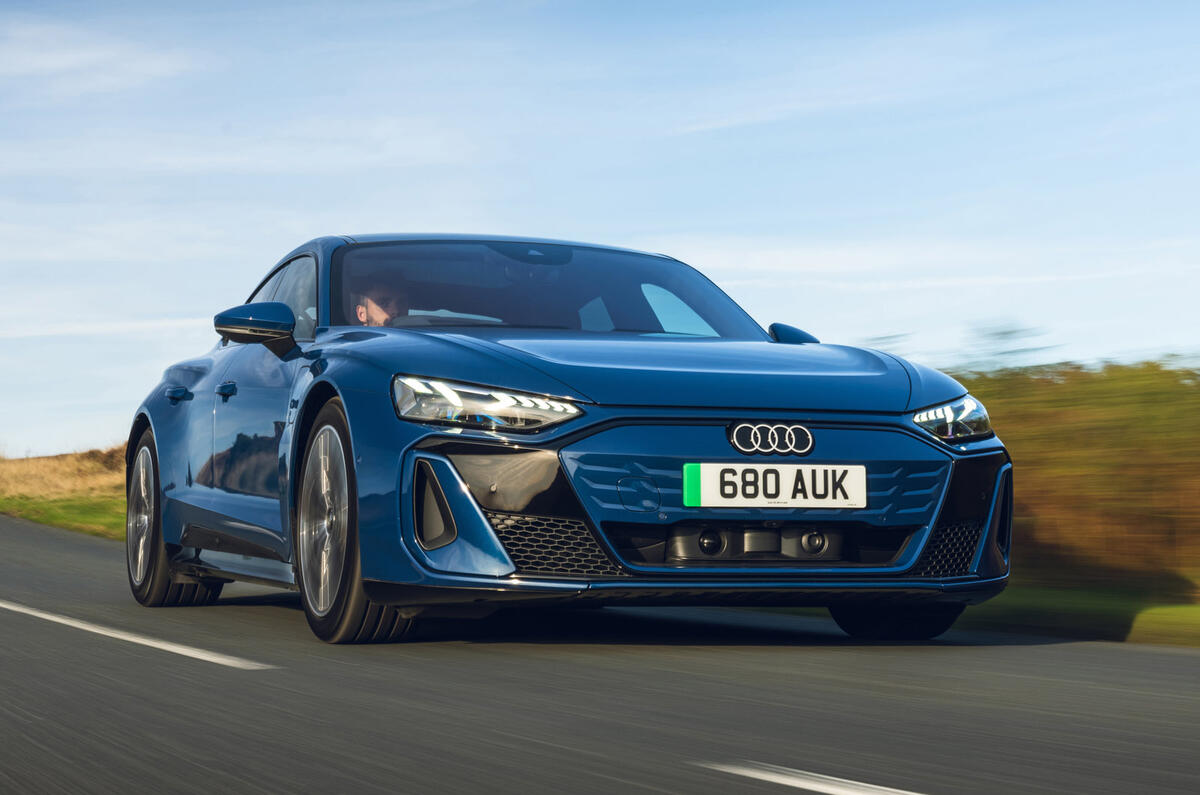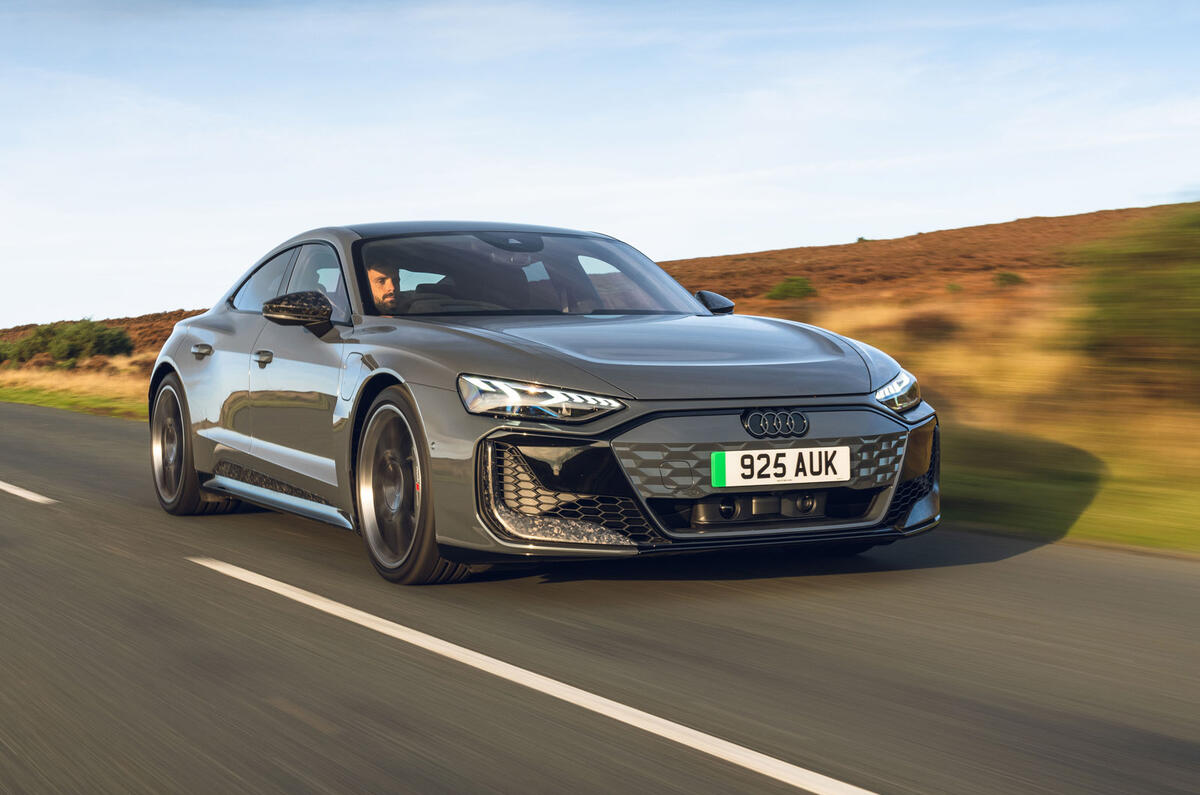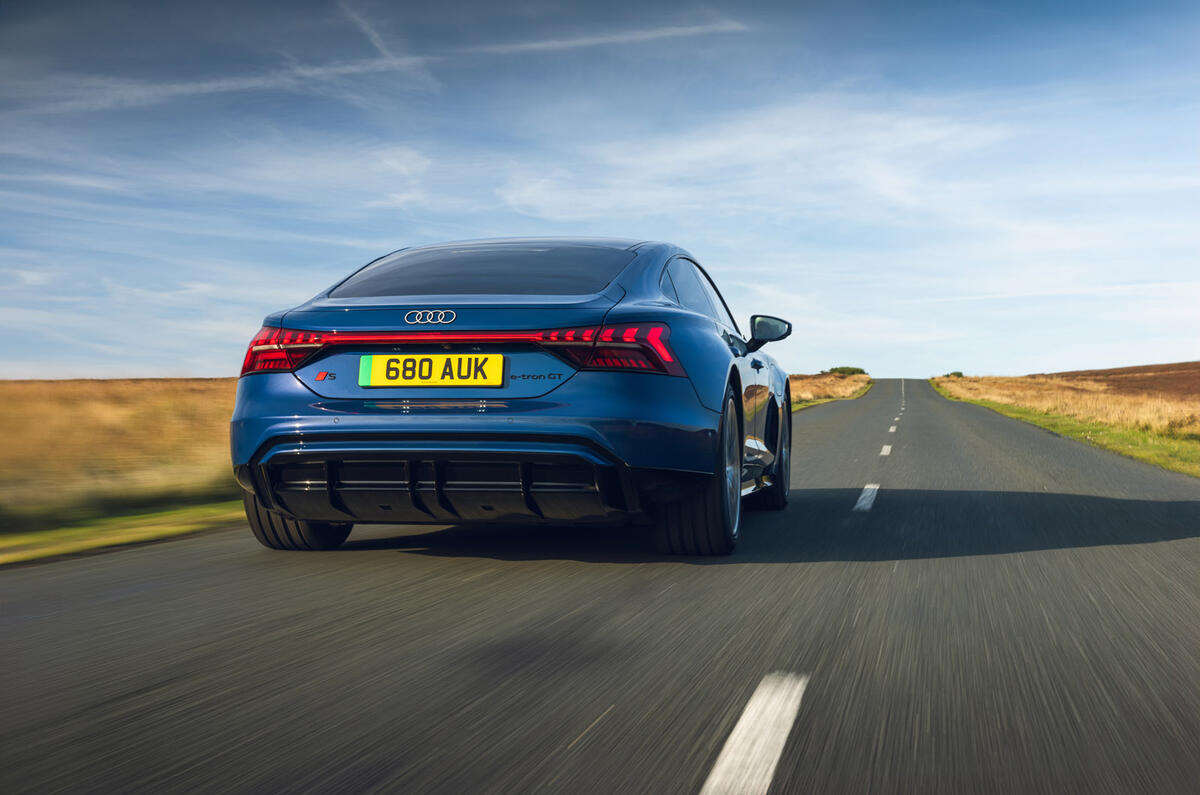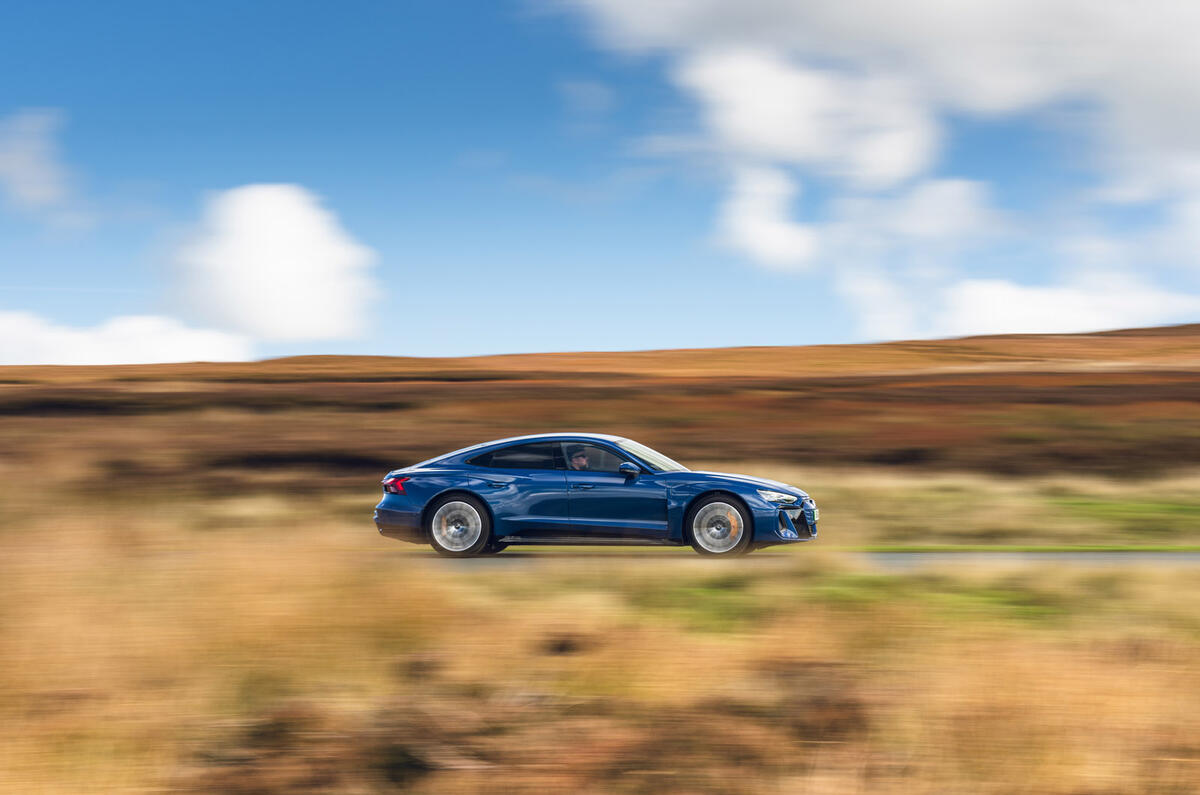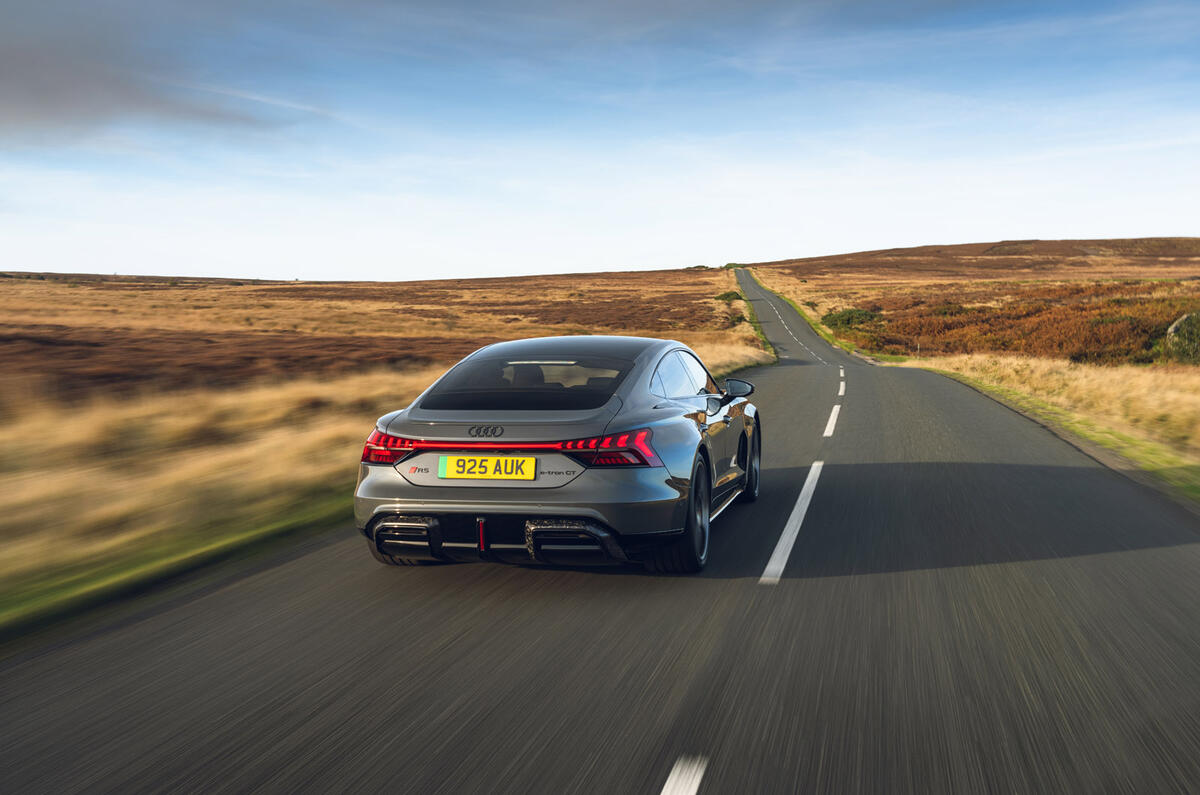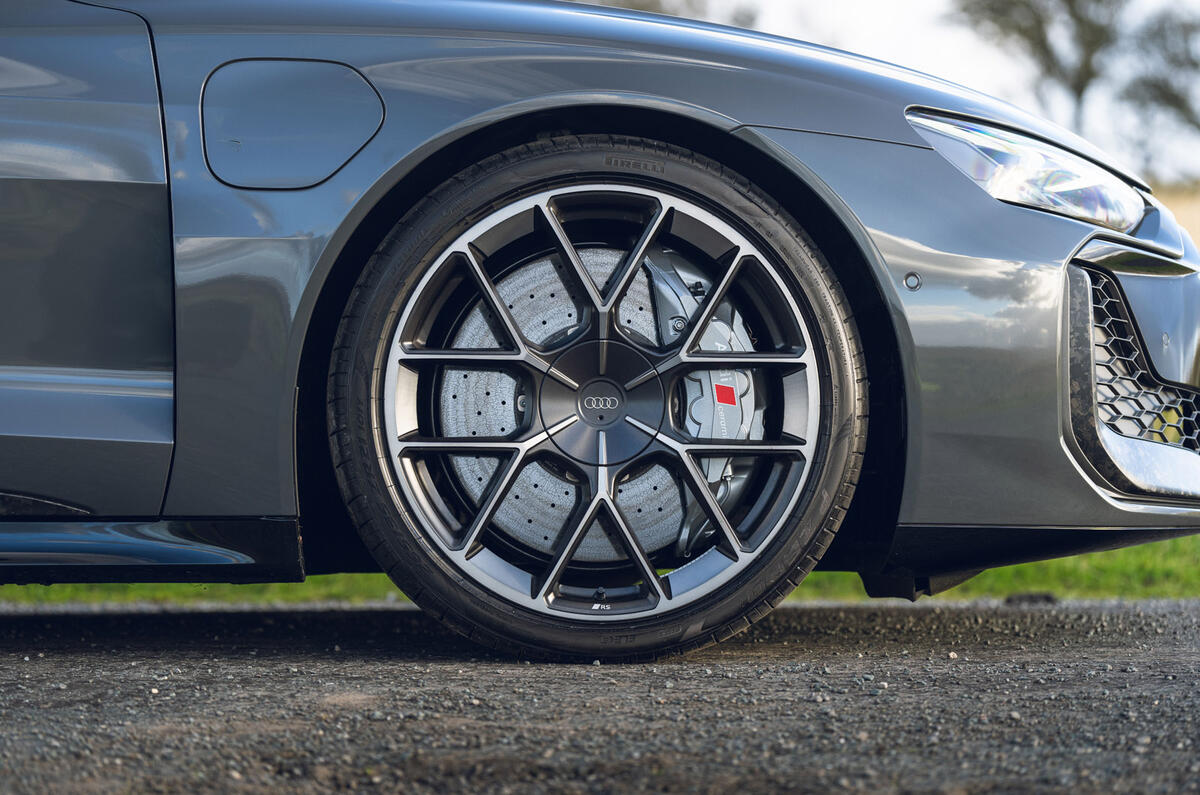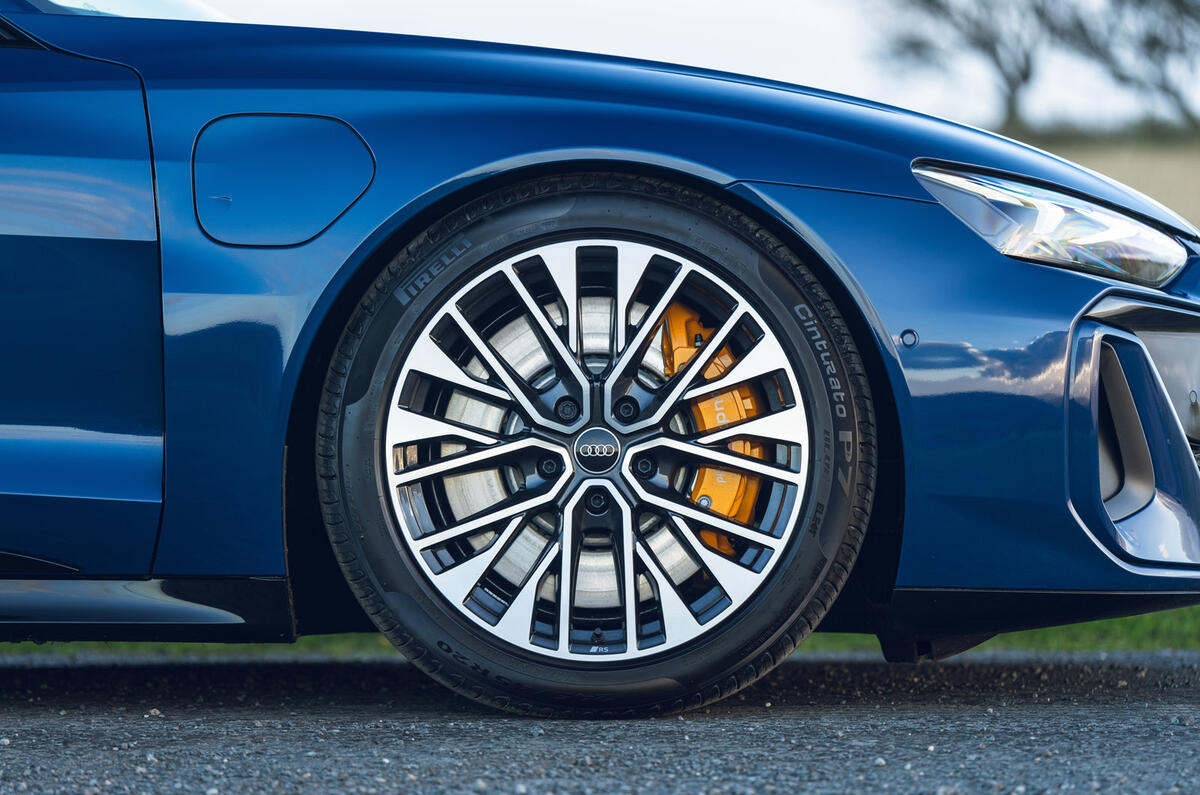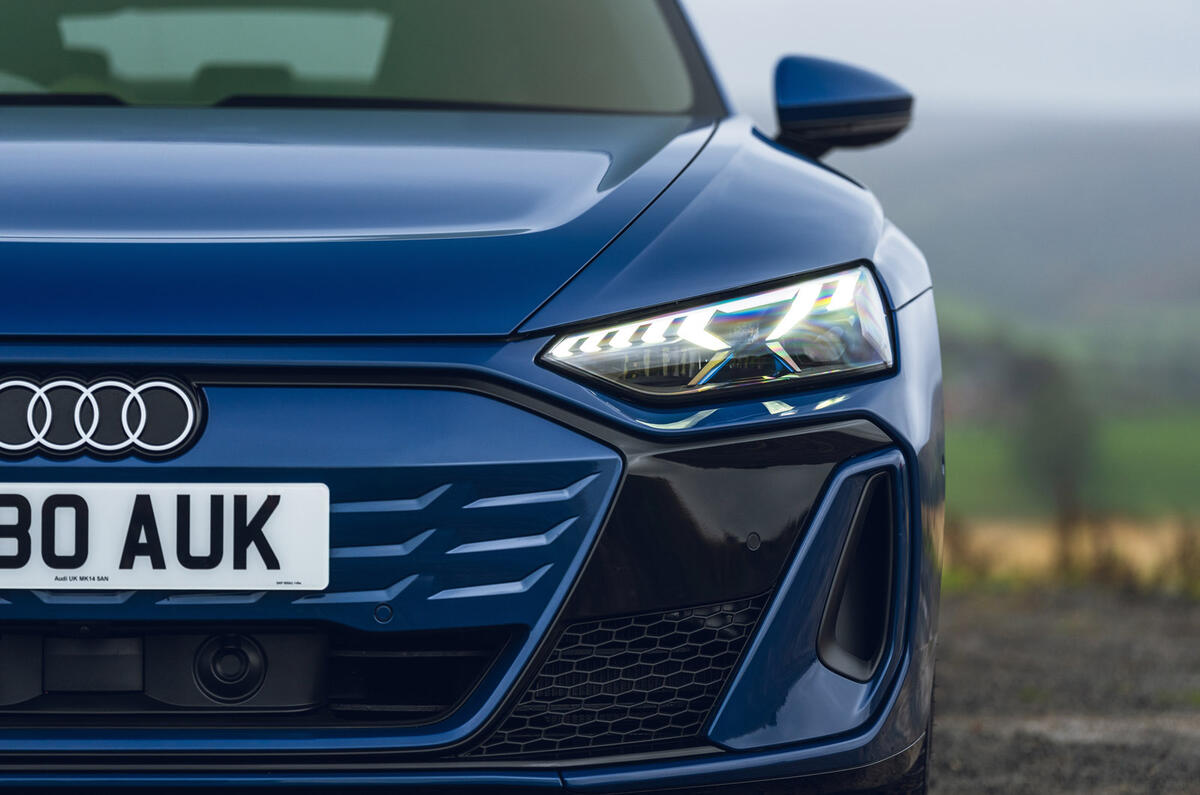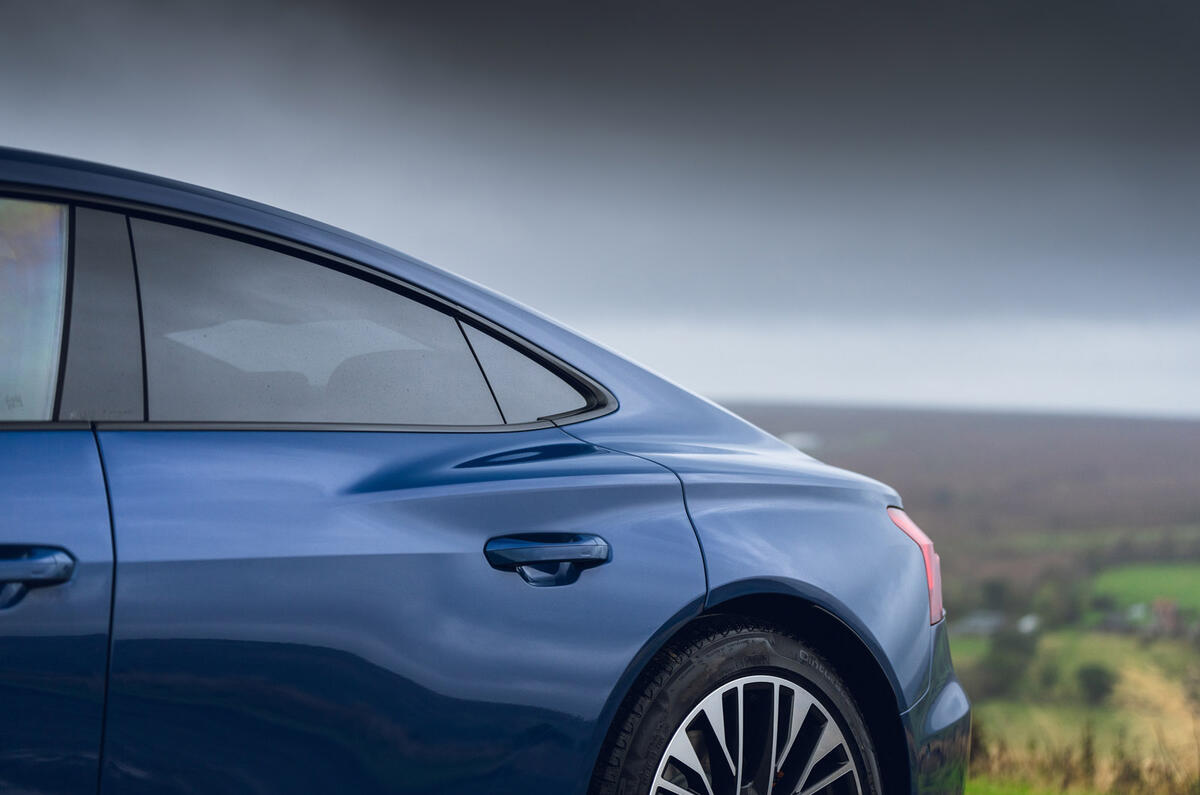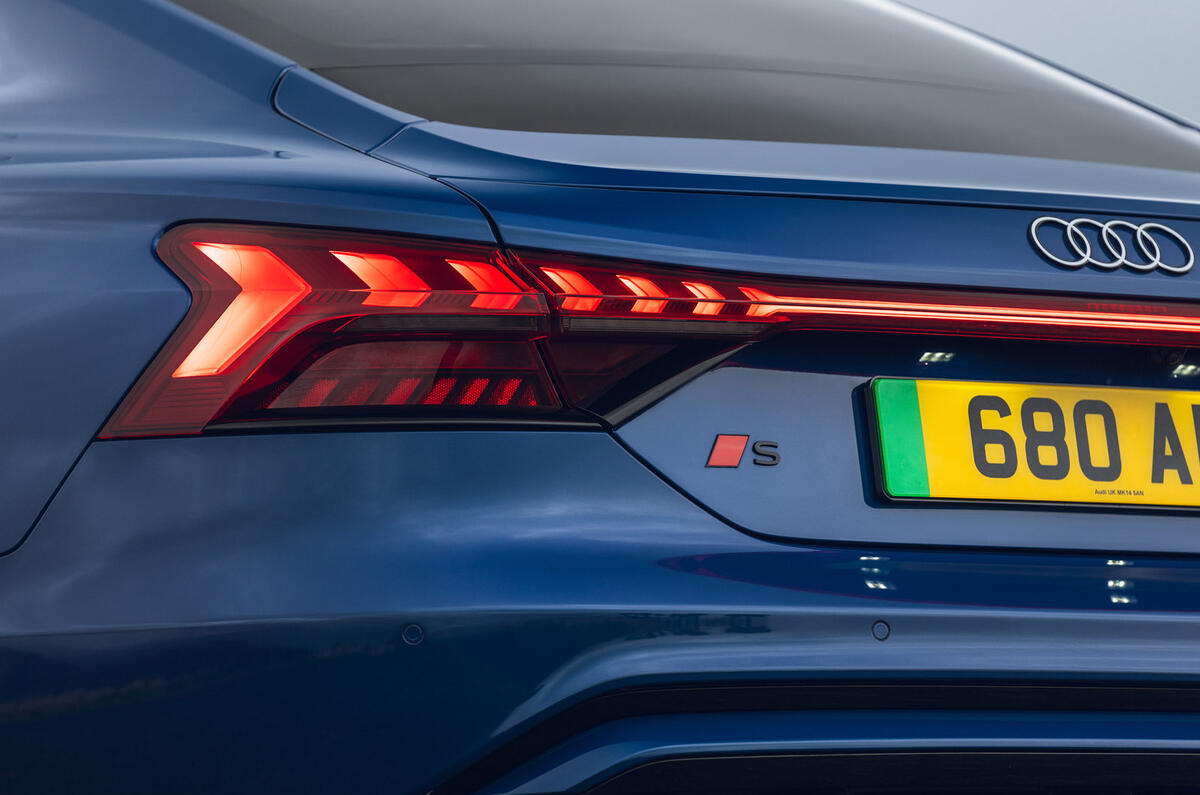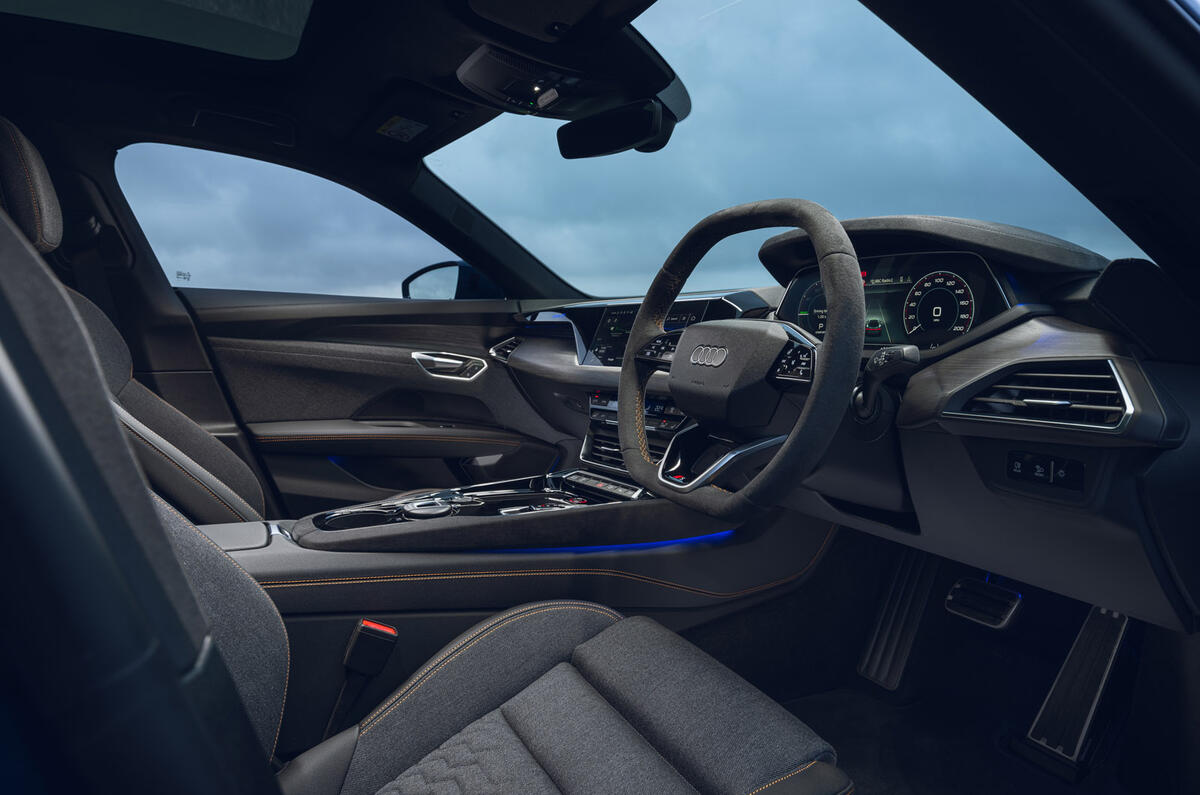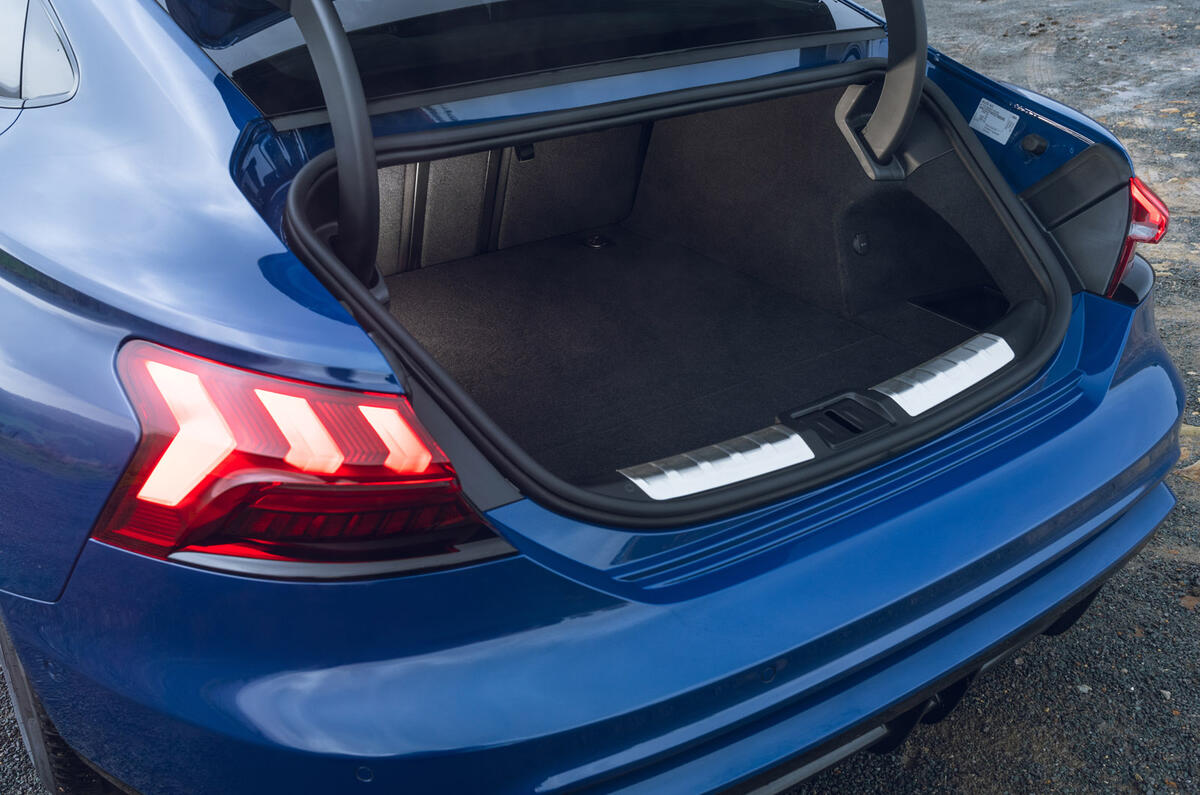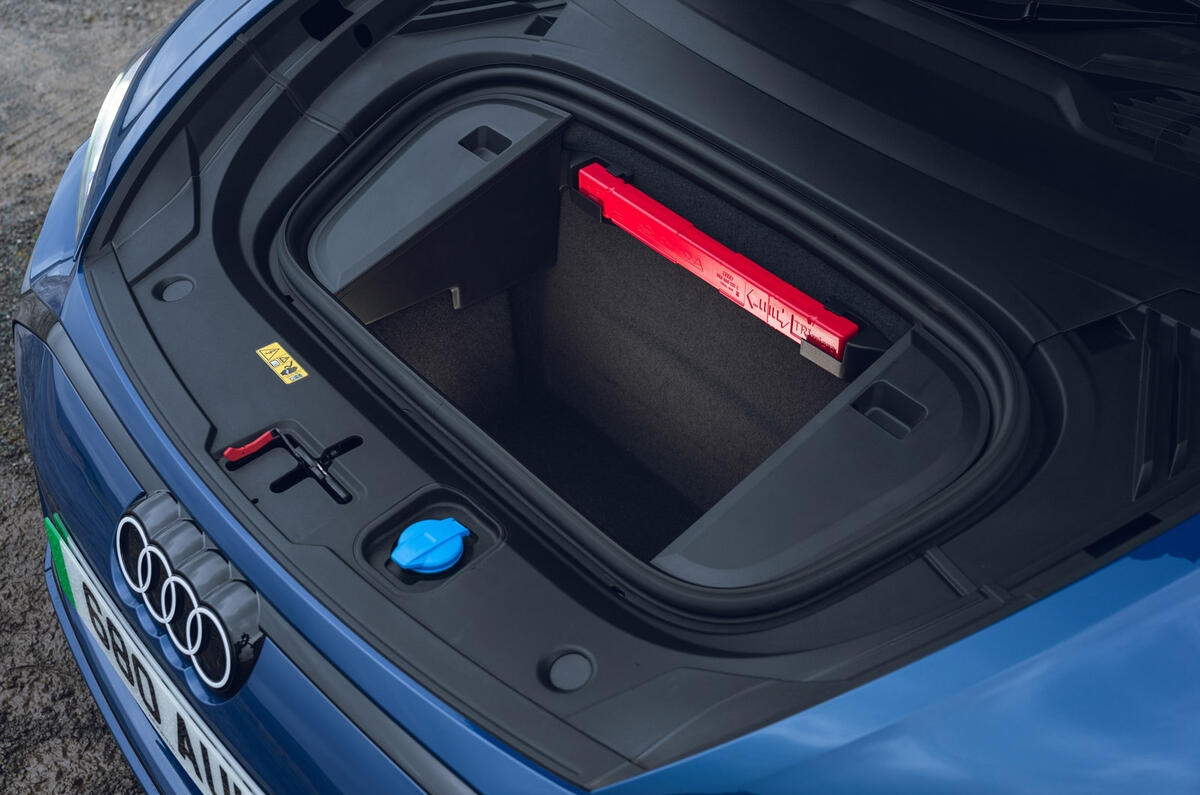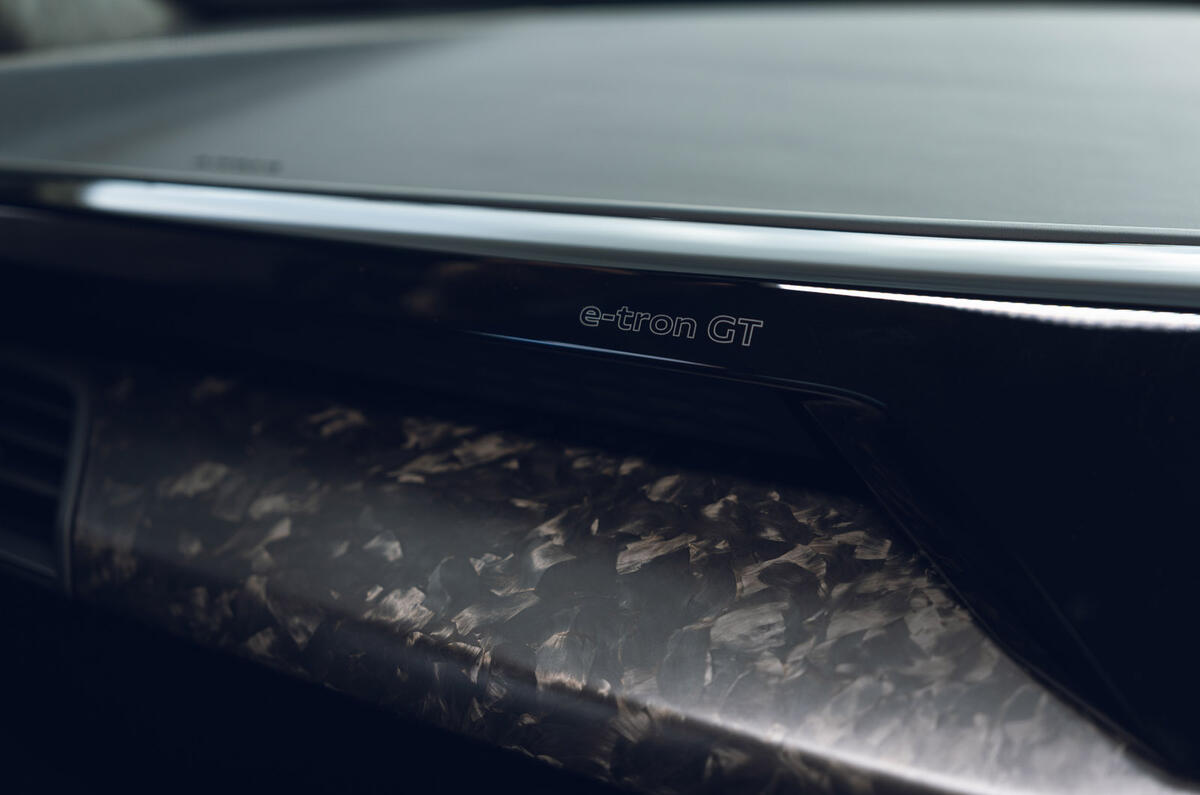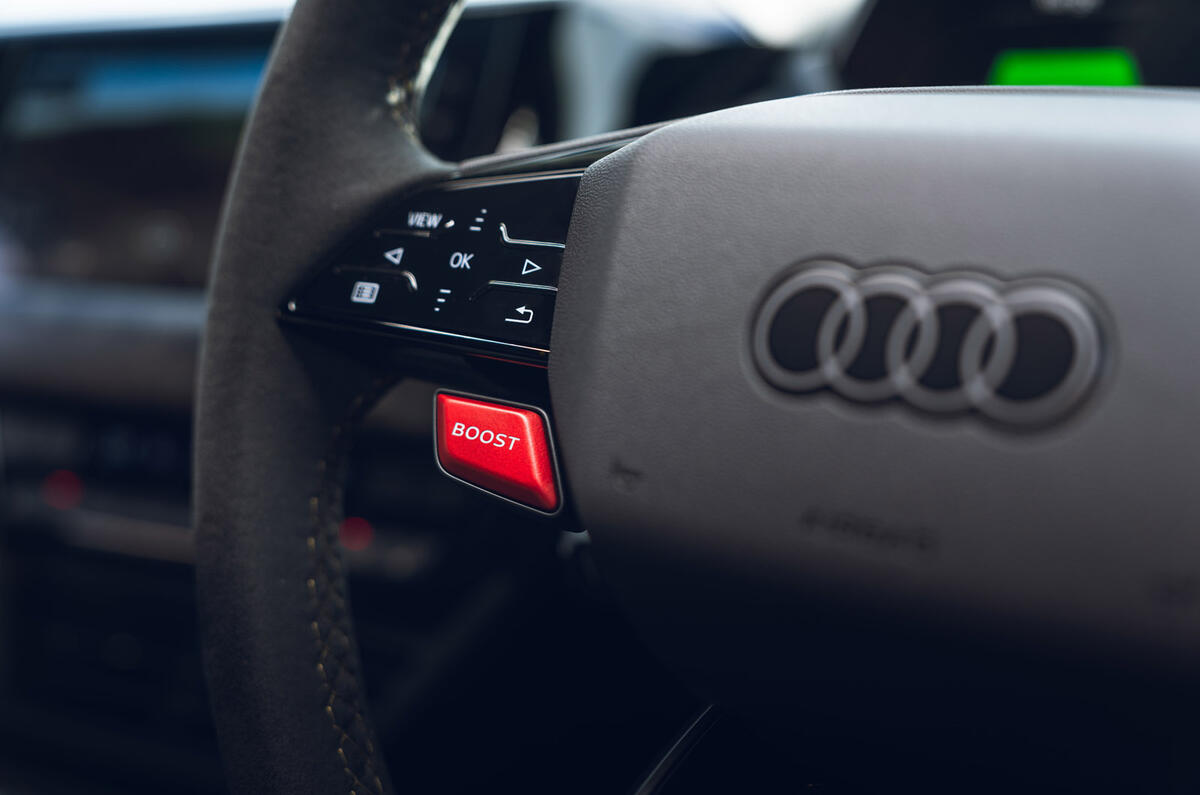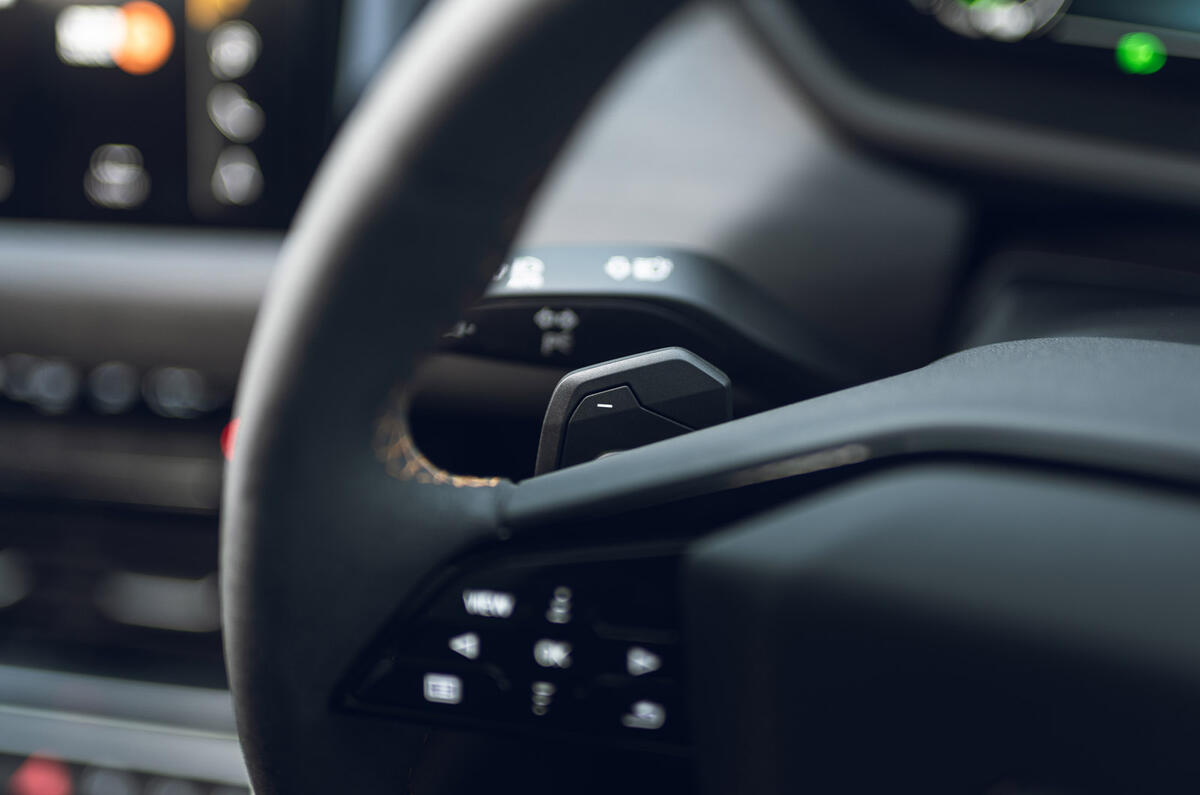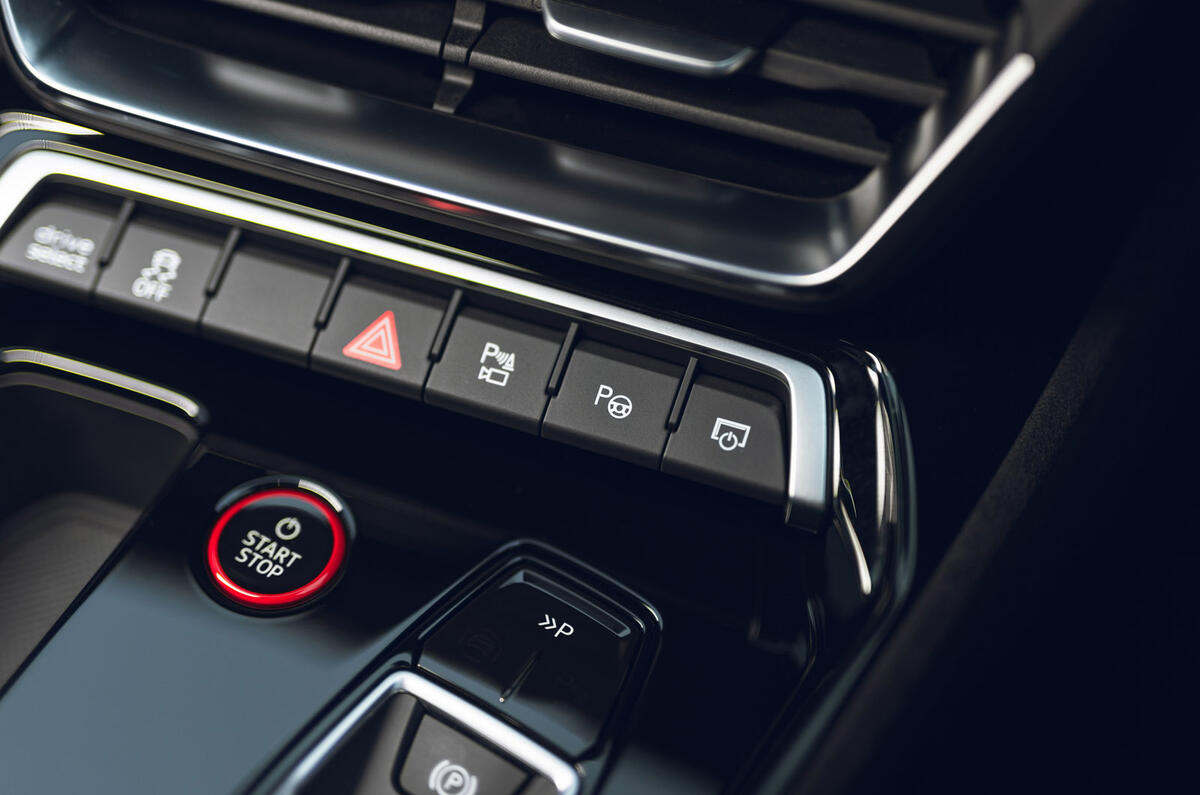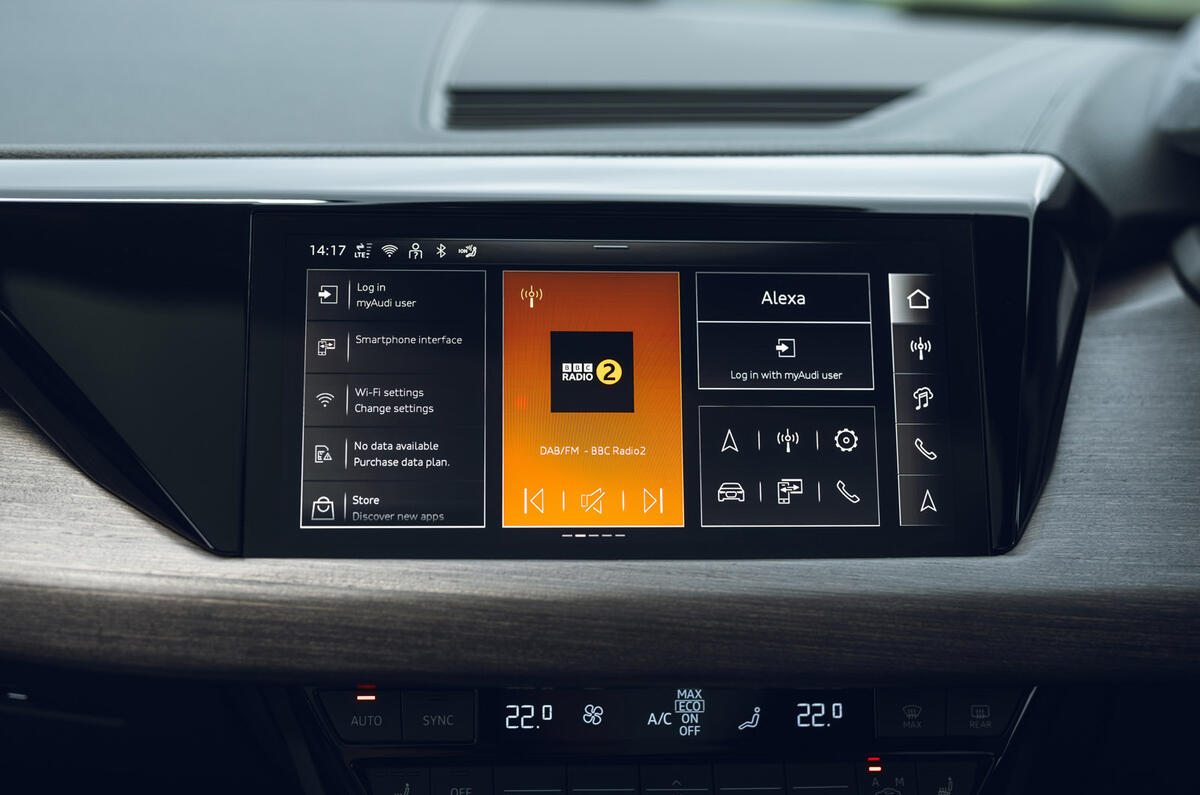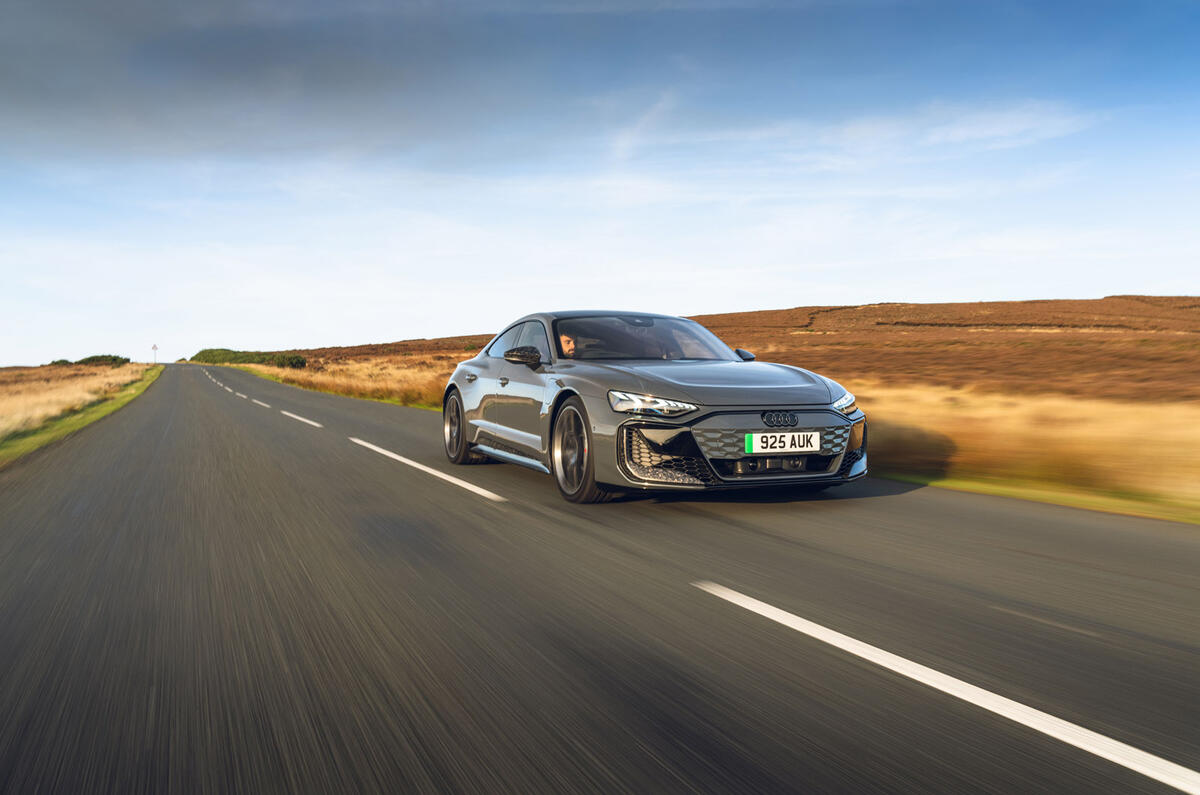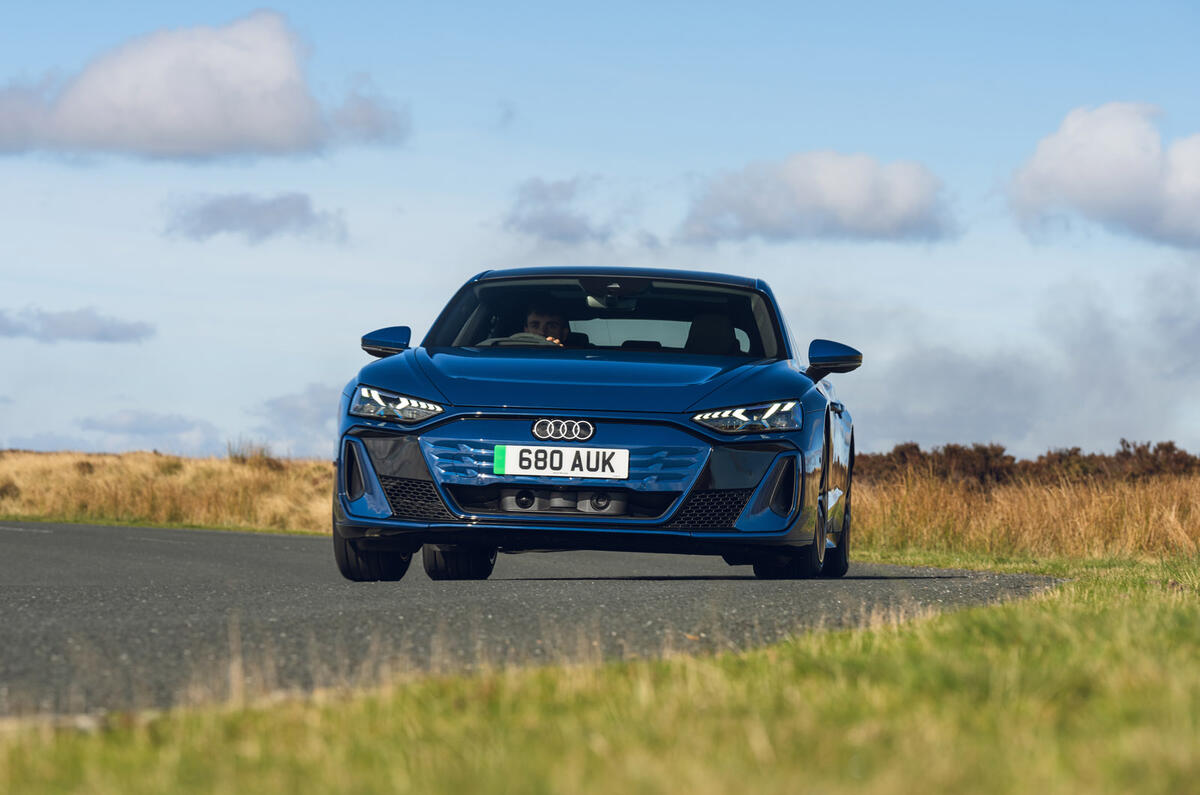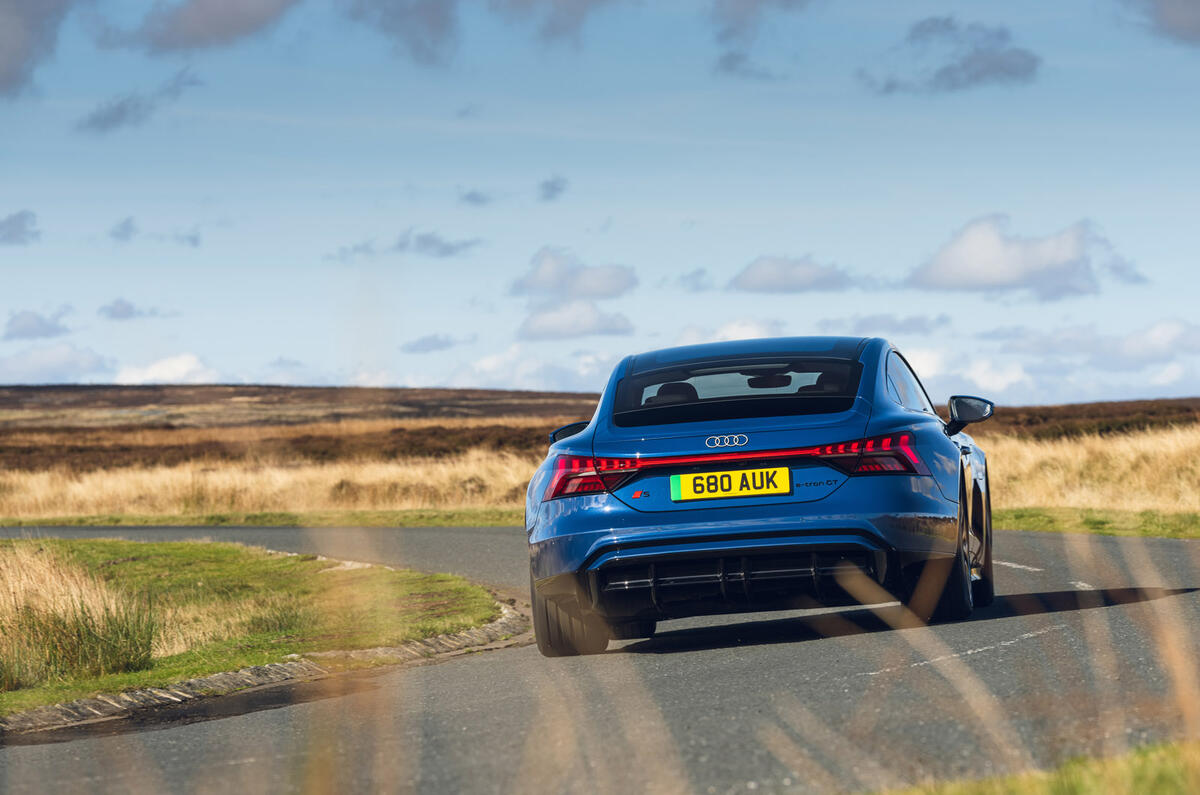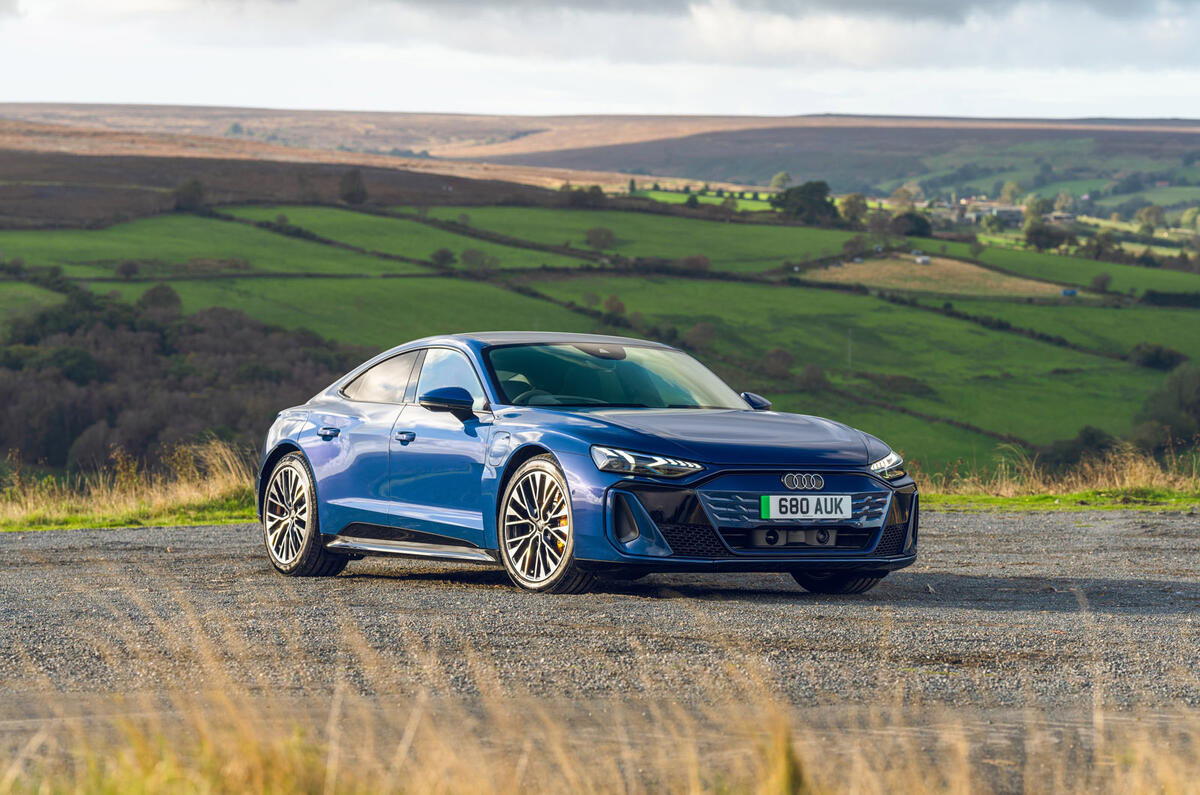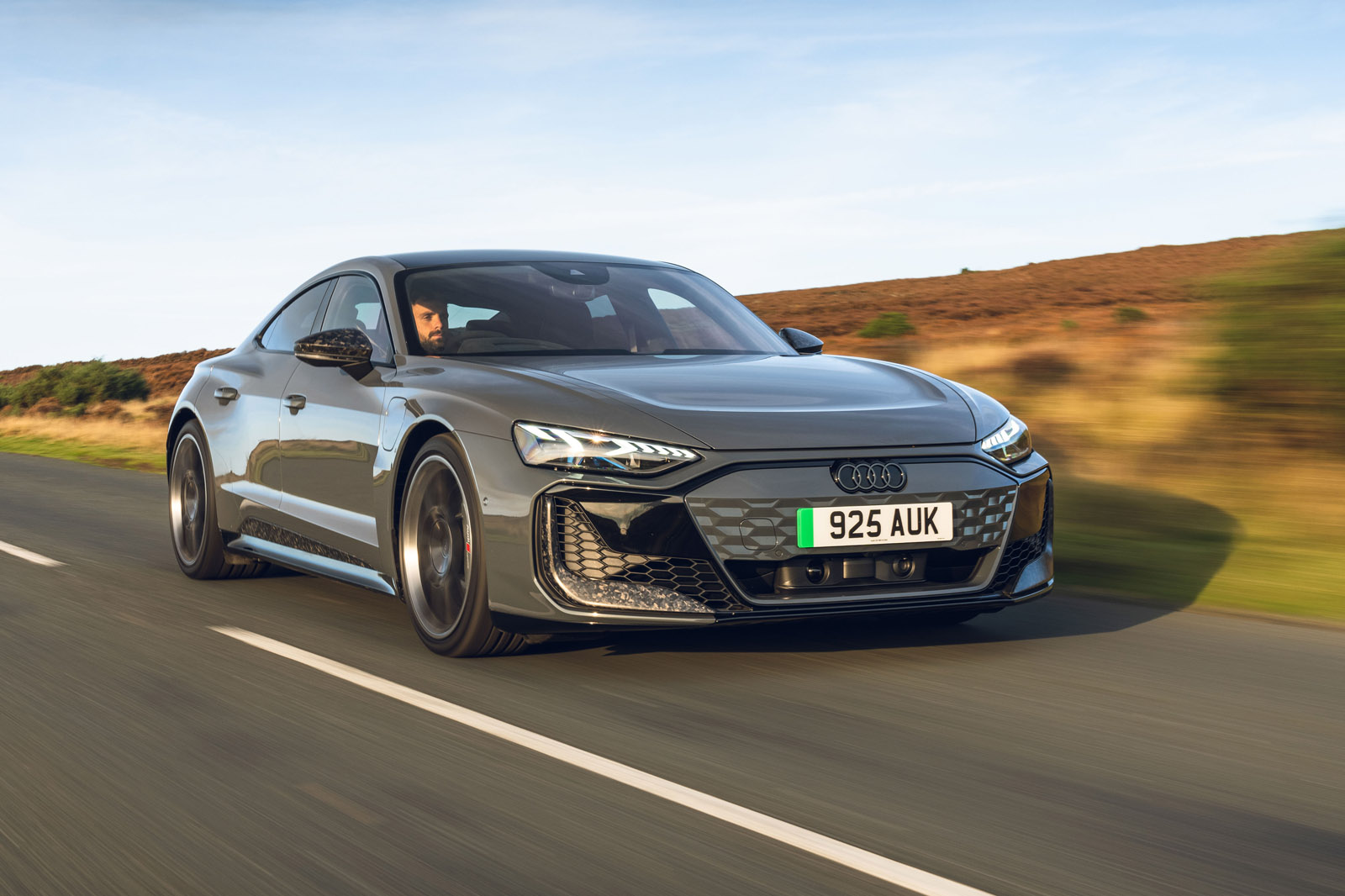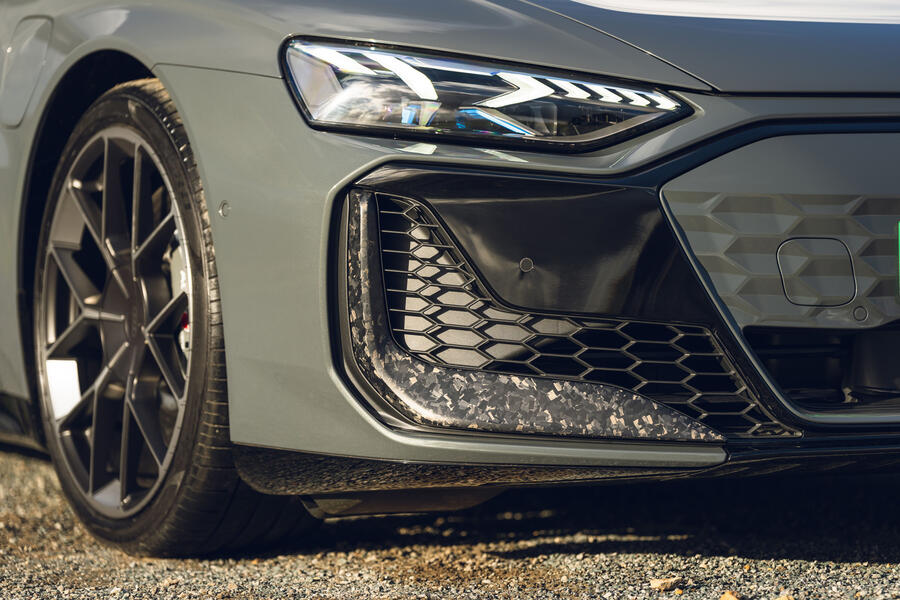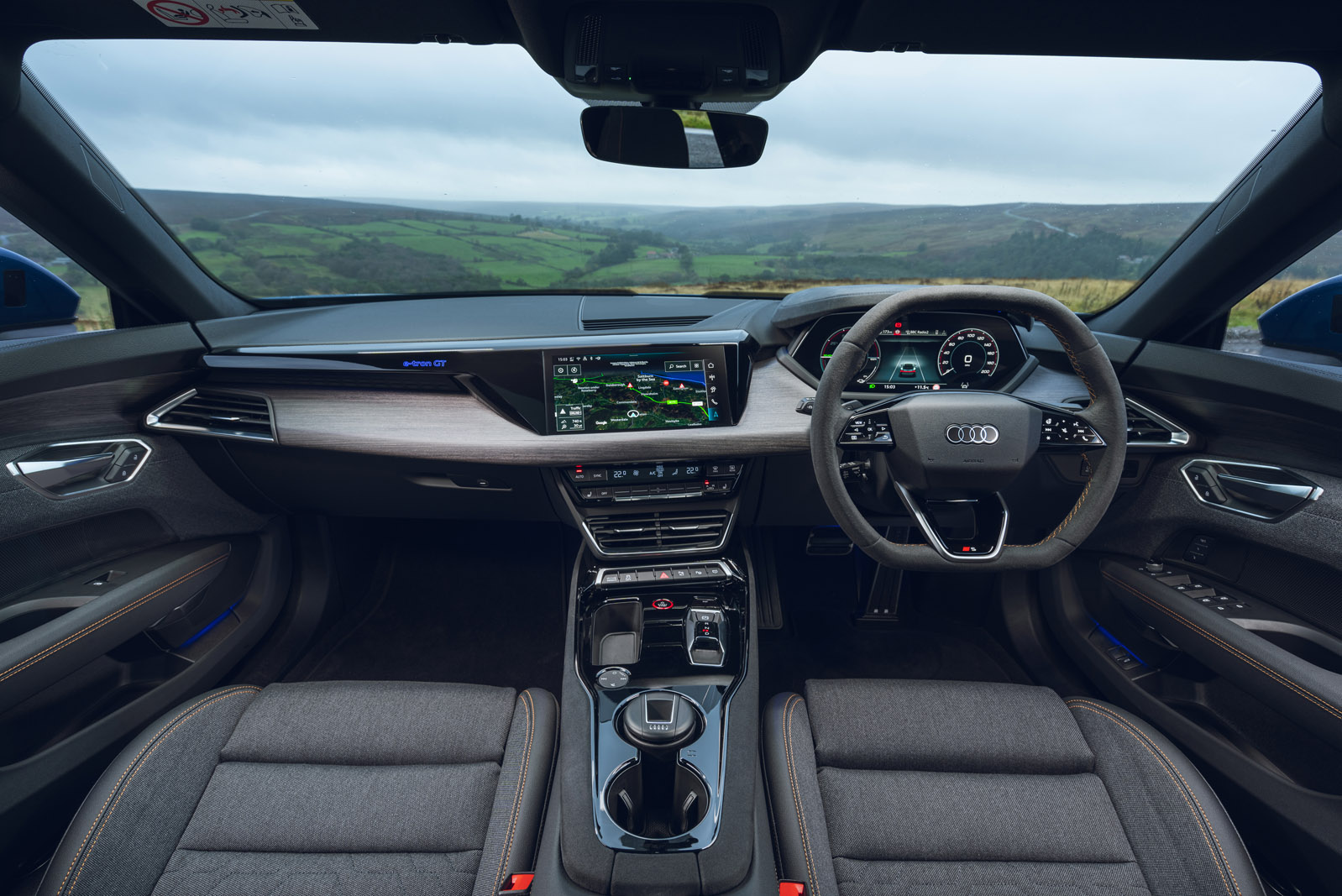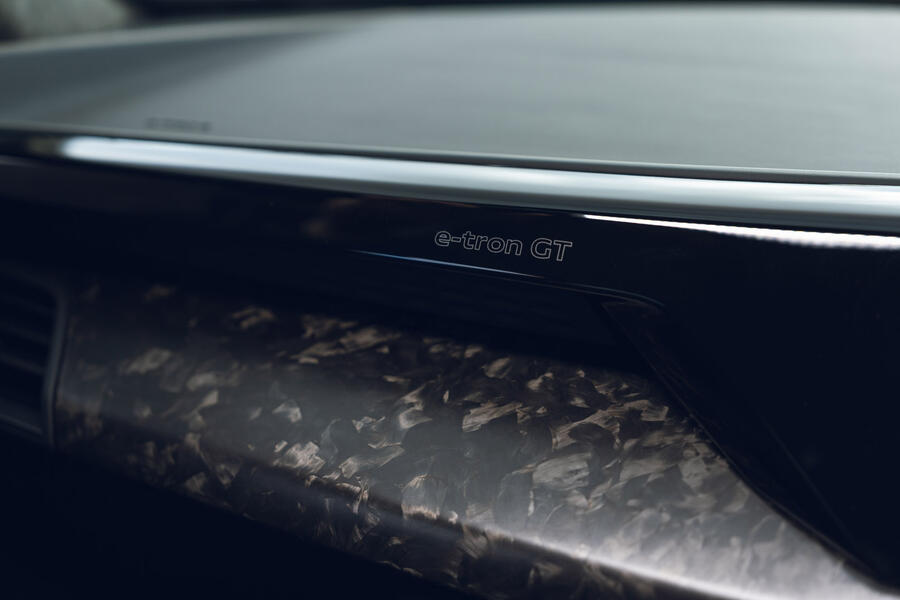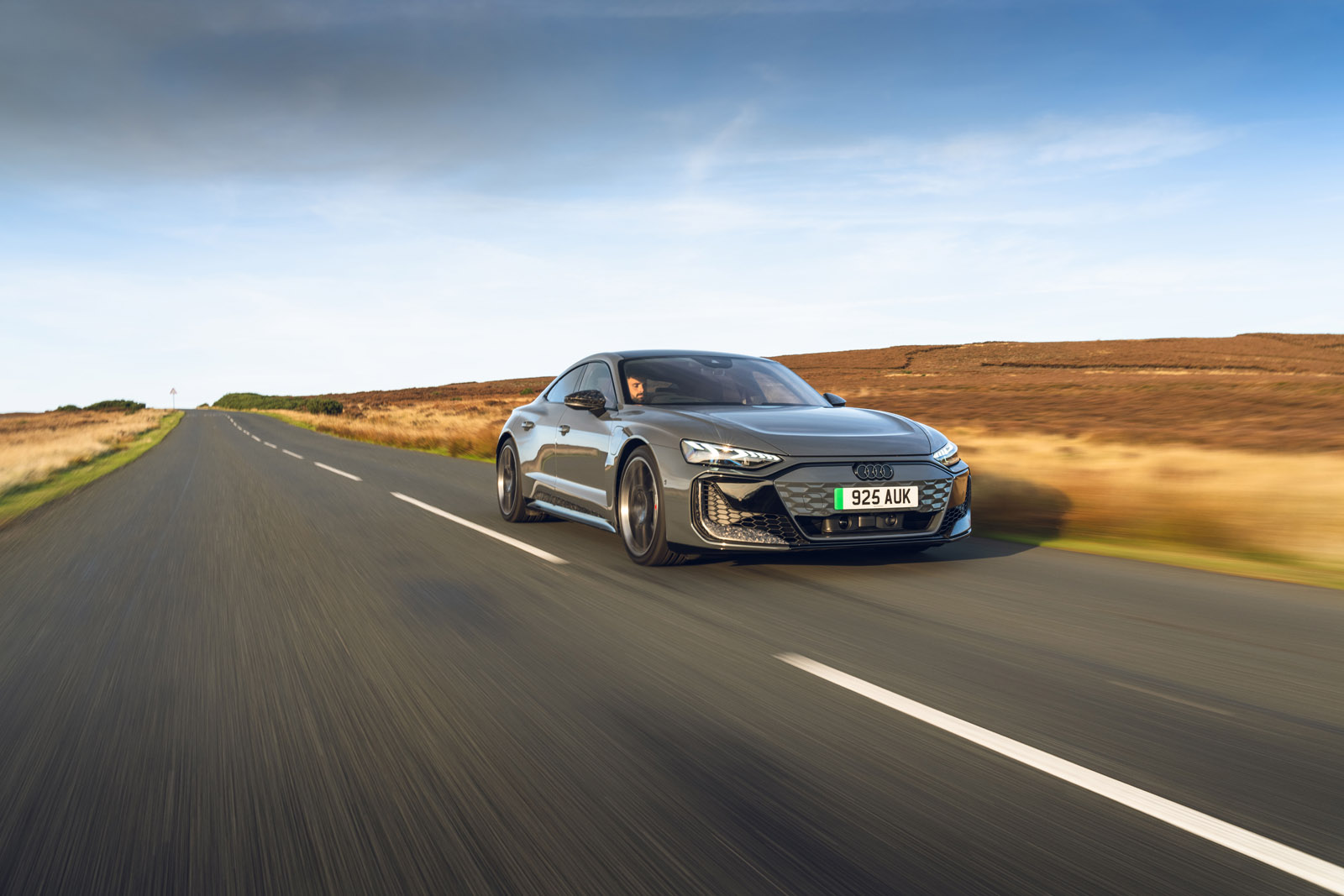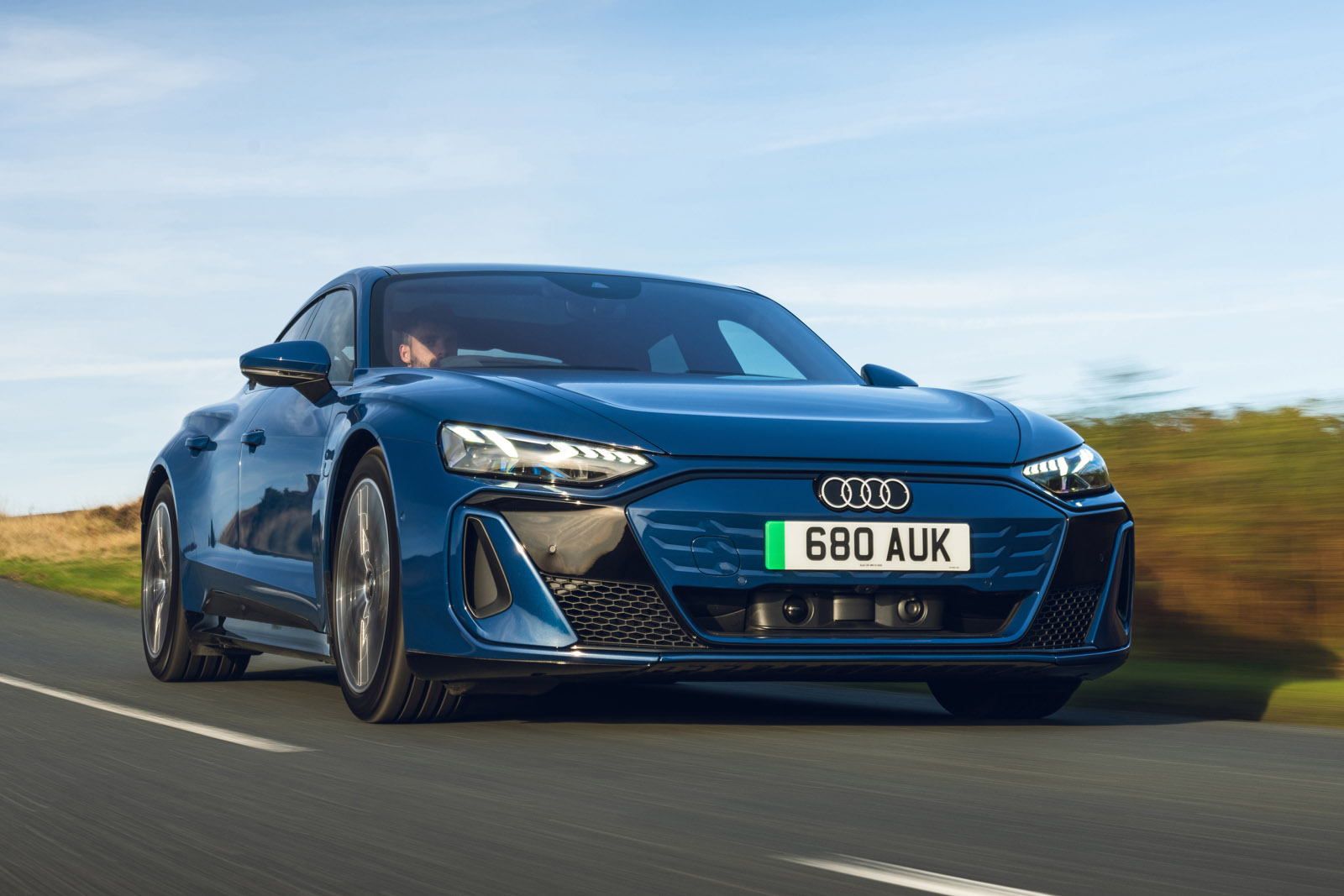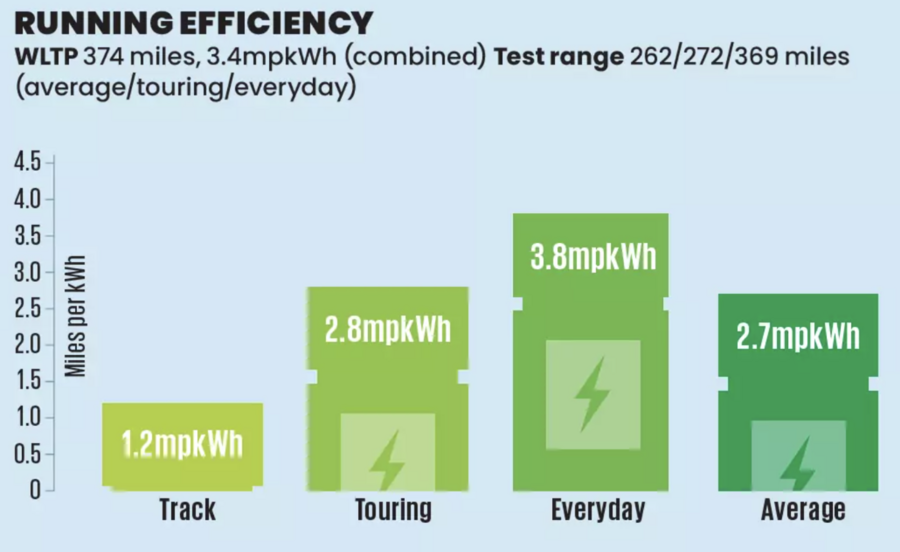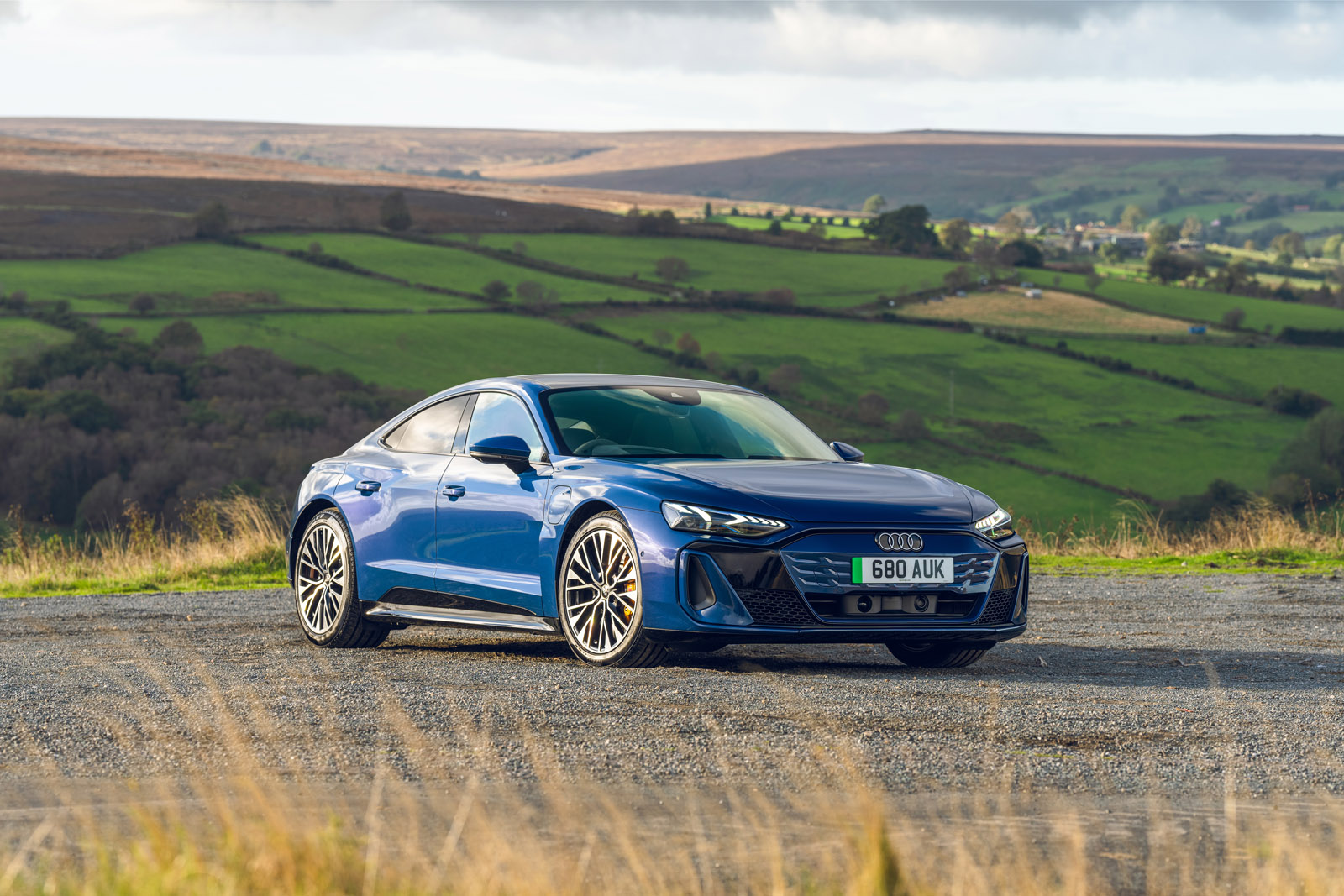When we said even the base S E-tron GT feels faster than an RS6 Avant, we meant it. With 671bhp on tap, this is an extraordinarily quick car and, of course, one with that immediacy of torque delivery that is typical of an EV.
The base E-tron GT has been given quite the uplift in power and at Horiba MIRA it proved even quicker off the mark than claimed (check out the figure below). A 0-60mph time of 3.1sec is nipping at the heels of bona fide supercars, and comes as a result of this chassis’s ability to put almost all of its 546lb ft to the ground cleanly and – more importantly – instantly.
The 6.8sec time to 100mph is a little steadier (relatively speaking), and we know that the updated Taycan Turbo S rattles off the same increment in just over five seconds. But be in no doubt: the S E-tron GT has a turn of pace, both off the mark and in terms of roll-on acceleration at intermediate speeds, to shame almost any comparatively priced petrol car. And it is the insouciance with which it reveals that pace hat leaves an impression.
Even in Dynamic mode, where the car’s futuristic, synthesised sound is at its most noticeable, the GT is relatively laid-back and undramatic. This characteristic – of speaking quietly but carrying a big stick – suits the Audi well and feeds into its aura of being a quietly very capable saloon-cum-sports car.
Mind you, in one respect the GT is just a bit too relaxed. The woolly brake-pedal feel of the pre-facelift car has perhaps been mitigated a little, but it is still conspicuously lacking in resistance and feel compared with the Porsche Taycan – and indeed most cars of this performance level.
In normal driving this can go unnoticed, because you will be relying on the regenerative braking effect alone much of the time. (And, on a related note, the car’s ability to completely freewheel is still welcome.) However, unexpected stops can be a little heart-in-mouth, such is the pedal travel required to get the cast-iron brakes really working. It’s an oversight in a car that otherwise feels supremely dependable.

We've also tried the RS Performance, and with 912bhp during launch control (a mere 737bhp normally), it's violently fast. When you deploy it all on a damp road, the rear wheels will squirm and scrabble slightly but otherwise deploy the power with little drama.
Interestingly, the RS Performance model has a dedicated mode in which propulsive force is doled out with even more precision and a little extra shape in the delivery, but the standard car doesn't suffer for not having this feature: it's easy to summon exactly the amount of acceleration you want, when you want it.
Working away behind the scenes is the same two-speed rear gearbox as before. It generally engages second gear when pulling away, for maximum smoothness, although if you engage Dynamic mode, you can still hear it dropping into first. It's a little quirk of the E-tron GT that adds a bit of mechanical engagement, and from a standing start you can feel the second ratio hit home at around 65mph.




